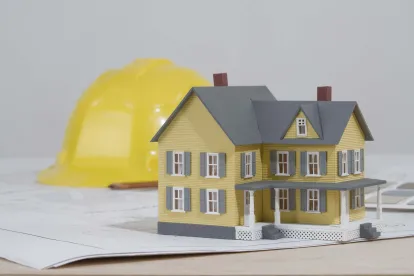Addressing whether a home builder’s floor plans infringed the plaintiff’s architectural copyrights, the US Court of Appeals for the Seventh Circuit affirmed a lower court’s entry of summary judgment against the plaintiff, finding that only a virtually identical design would infringe the plaintiff’s “thin copyright” in its floor plans. Design Basics, LLC v. Signature Construction, Inc., Case No. 19-2716 (7th Cir. Apr. 23, 2021) (Sykes, J.)
Design Basics, described bluntly by the Seventh Circuit as a “copyright troll,” holds copyrights in thousands of floor plans for suburban single-family homes. Design Basics sued Signature Construction (Signature) for infringement of 10 of its designs. Discovery showed that Signature held copies of four of Design Basics’ designs, one of which had been marked up by a Signature employee. Signature moved for summary judgment, relying on a 2017 Seventh Circuit opinion in Basic Designs v. Lexington Homes in which the Court found that Design Basics’ copyright protection in its floor plans was “thin.” The district court granted summary judgment against Design Basics, and this appeal followed.
Relying heavily on Lexington Homes, the Seventh Circuit took the opportunity to clarify the elements of a prima facie case of copyright infringement for works with “thin” copyright protection. The Court explained that to establish infringement, the plaintiff must prove (1) ownership of a valid copyright and (2) copying of original elements of the work. Because ownership was not contested in this case, the Court focused on the copying element. The Court explained that “copying” constitutes two separate questions: Whether the defendant actually copied the plaintiff’s protected work (as opposed to creating it independently) and whether the copying constituted wrongful copying, also known as unlawful appropriation.
Because there is rarely direct evidence of copying, circumstantial evidence may be used to infer actual copying, the Seventh Circuit explained. Proving actual copying by circumstantial evidence requires evidence of access to the plaintiff’s work and evidence of substantial similarity between the two works. The analysis of substantial similarity is not limited to the protected elements of the plaintiff’s work; any similarities may be probative of actual copying. However, the unlawful appropriation prong requires substantial similarities to the protected elements of the copyrighted work. The Court noted that the use of the same term for two different tests has caused confusion, and therefore implemented the term “probative similarity” when referring to actual copying, and “substantial similarity” in the case of unlawful appropriation. The Court went on to explain that in the case of thin copyright protection such as this, proving unlawful appropriation requires more than a substantial similarity; only a “virtually identical” plan will infringe.
The Seventh Circuit then turned to the issues of scènes à faire, and merger. Citing its detailed analysis in Lexington Homes, the Court noted that arrangements of rooms in Design Basics’ floor plans were largely scènes à faire, deserving no copyright protection. For example, placement of the dining room near the kitchen and a bathroom near the bedrooms is rudimentary, commonplace and standard, and is largely dictated by functionality. The Court went on to explain that copyrights are intended to protect expressions of ideas, and that merger doctrine prevents the use of copyright to protect the underlying ideas. Additionally, if an idea can only be expressed in a few ways, copyrighting every varied expression of an idea would indirectly and impermissibly protect the idea itself. In the present case, Design Basics created more than 2,800 floor plans, and the Court questioned whether it would be possible to design a suburban single-family home that did not look similar to at least one of these plans. The Court concluded that Design Basics would own nearly the entire field of suburban, single-family home design if it were allowed to hold more than thin copyright protection in its floor plans.
The Seventh Circuit concluded that except for the Design Basics floor plan that was marked up by Signature, there was no direct evidence of actual copying. Under the test for circumstantial proof of actual copying, the Court noted the many material differences between the Signature floor plans and Design Basic’s copyrights. Room dimensions, ceiling styles, number of rooms and exterior dimensions were all different enough to preclude an inference of actual copying as a matter of law. Even if actual copying was assumed, the Court found that no reasonable jury could find unlawful appropriation because even though the designs were similar, there were notable differences in many respects. Even the design based on the marked-up Design Basics plan was different enough to be noninfringing as a matter of law. The Court therefore affirmed the summary judgment grant.



 />i
/>i
